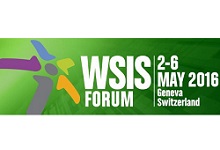Making ICT accessibility a reality: Policies and standards on the public procurement of accessible ICTs
2 May 2016 11:00h
Event report
[Read more session reports and live updates from the WSIS Forum 2016.]
The session was opened by Mr Dónal Rice (Senior Design Advisor, ICT Centre for Excellence in Universal Design, National Disability Authority of Ireland), co-author of the ITU-G3ict Model Policy on the Public Procurement of Accessible ICT.
Mr Kemal Huseinovic (Chief Infrastructure, Enabling Environment and E-Application Department, ITU Bureau of Telecommunication Development) talked about ICT policies that have been particularly effective in reducing the cost of ICT accessibility and in creating new markets for accessible ICTs. He noted that the ability of private ICT companies to have government support is a powerful motivator for them to improve their capacity to produce accessible ICT goods. Procurement has a strong financial underpinning. According to the World Trade Organization, 10% to 15% of the gross domestic product (GDP) globally comes from public procurement, and in the EU that figure is as high as 16% to 17% of the GDP.
Mr Alejandro Moledo (New Technologies and Innovation Officer, European Disability Forum) talked about the rights of people with disabilities to access ICTs. He presented a cross-cutting disability perspective on ICT as a social good for people who face barriers in using technologies in their everyday life to access culture, entertainment, and employment opportunities. Access to ICT is a fundamental right. ICT is also an opportunity that can be used to foster more inclusion of persons with disabilities. Reference was made to the Convention on the Rights of Persons with Disabilities, and its Article 9 that talks about the need to ensure that persons with disabilities have access to information and communication technologies and systems.
Mr Shadi Abou-Zahra (Activity Lead, WAI International Program Office, W3C Web Accessibility Initiative) spoke about the Web Content Accessibility Guidelines, which have become an international standard for web accessibility.
Mr David Capozzi (US Access Board) talked about the American experiences in developing guidelines and standards, and supporting the enforcement of regulation on ICT accessibility. US Access Board is the federal agency whose primary mission is to promote accessibility for people with disabilities; it has developed related guidelines and standards included in a variety of accessibility-related laws.
Ms Inmaculada Placencia Porrero (Deputy Head of Unit, Rights of Persons with Disabilities, Directorate General for Justice and Consumers, European Commission) spoke about the need to focus efforts on harmonising and implementing existing accessibility principles and policies, rather than on developing new rules all together.
Mr Masahito Kawamori (Rapporteur of ITU-T Q.26/16, Accessibility to multimedia systems and services) mentioned that it is very important to look not only at accessibility technologies for everyone, but also at accessibility technology for everything.
Mr Gregg Vanderheiden (Director at Trace R&D Center, University of Wisconsin/University of Maryland) mentioned that accessibility is a movable feast. Although we are harmonising standards to make sure that regulation makes sense, there is an urgent need to make sure that there are clear requirements for industry to follow in order to guarantee that technology is accessible for persons with disabilities, as well as for older people. Vanderheiden said that it is also important to keep an eye on the continuous technological developments and their impacts on society.
by Hamza Ben Mehrez
Related event

